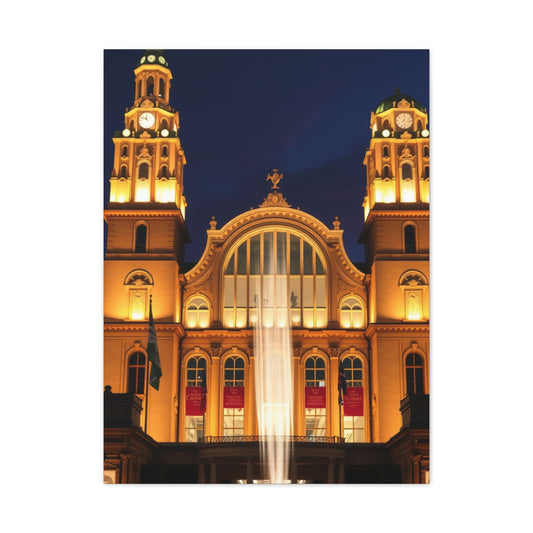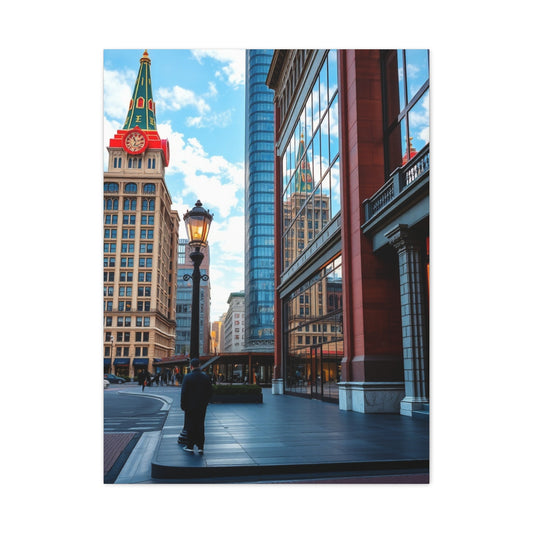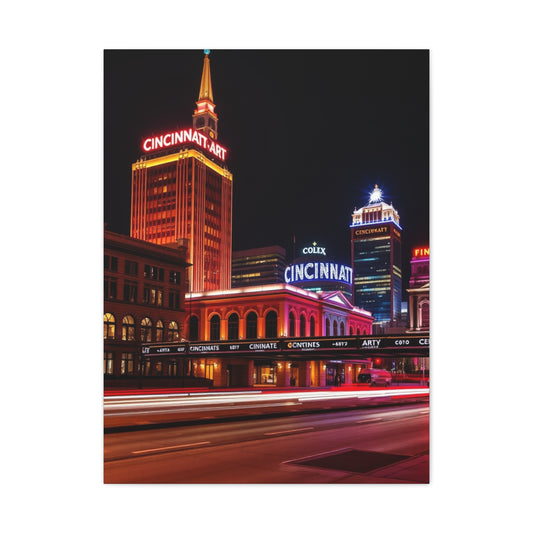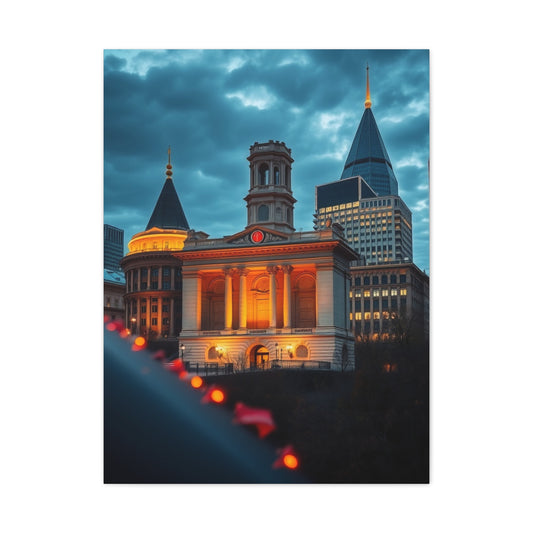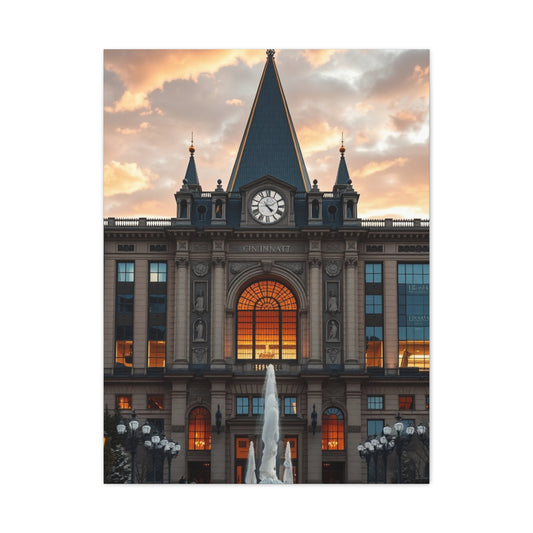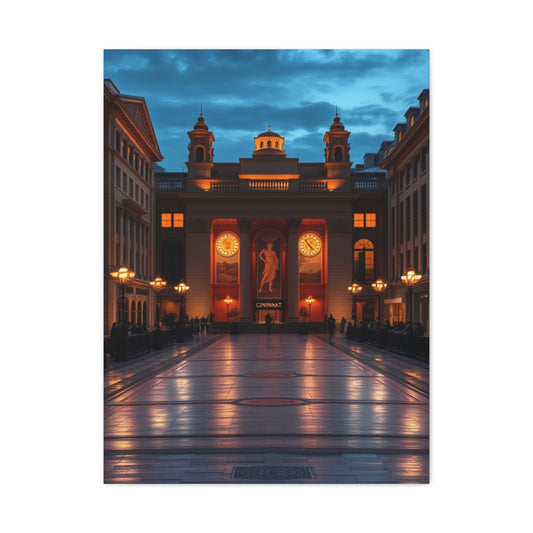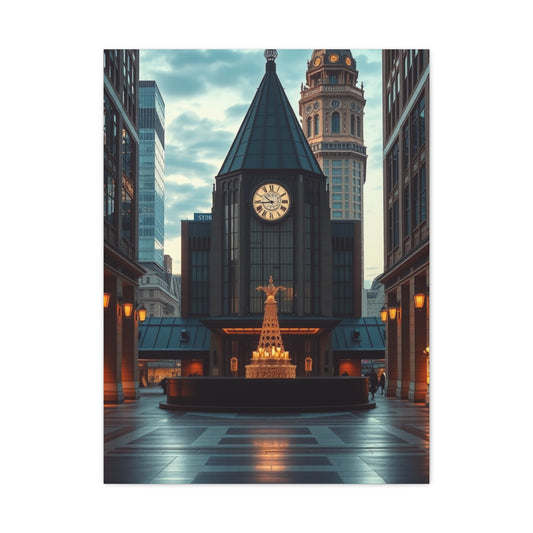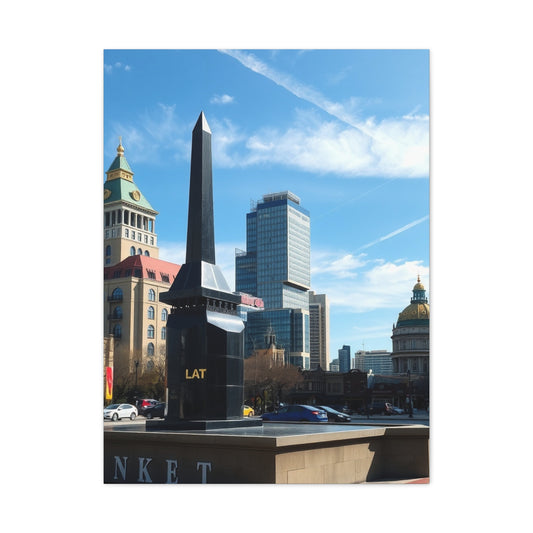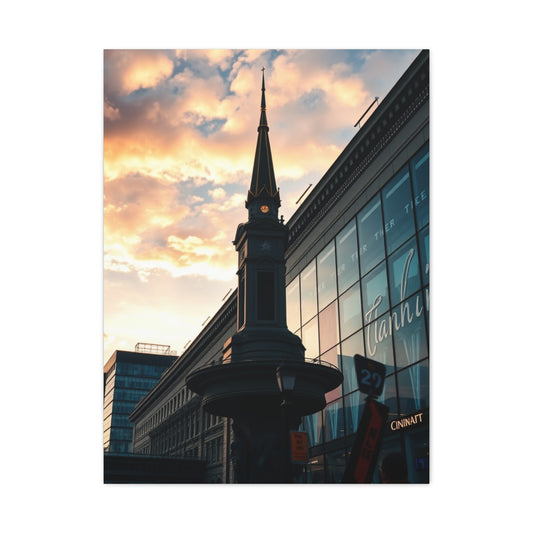-
Cincinnati Art Refined Canvas Wall Art & Canvas Print
Regular price From $141.23 USDRegular priceUnit price per -
Vision Cincinnati Art Art Wall Art & Canvas Print
Regular price From $141.23 USDRegular priceUnit price per -
Collection Cincinnati Art Art Wall Art & Canvas Print
Regular price From $141.23 USDRegular priceUnit price per -
Elite Cincinnati Art Vision Wall Art & Canvas Print
Regular price From $141.23 USDRegular priceUnit price per -
Cincinnati Art Supreme Canvas Wall Art & Canvas Print
Regular price From $141.23 USDRegular priceUnit price per -
Cincinnati Art Supreme Gallery Wall Art & Canvas Print
Regular price From $141.23 USDRegular priceUnit price per -
Supreme Cincinnati Art Collection Wall Art & Canvas Print
Regular price From $141.23 USDRegular priceUnit price per -
Masterpiece Cincinnati Art Vision Wall Art & Canvas Print
Regular price From $141.23 USDRegular priceUnit price per -
Cincinnati Art Luxury Canvas Wall Art & Canvas Print
Regular price From $141.23 USDRegular priceUnit price per
The Genesis of a City-Wide Canvas: The Story of Cincinnati Wall Art
In the heart of Ohio, a vibrant transformation has been taking place for years, turning blank brick walls into monumental works of art. This city-wide beautification is largely the work of ArtWorks Cincinnati, a non-profit organization founded with a powerful vision. Since its inception, ArtWorks has been dedicated to employing and training local youth and talented artists to create public art that enriches the urban environment. The result is an ever-growing outdoor art gallery that is free and accessible to everyone, fostering a deep sense of community pride and identity.
The mission of ArtWorks extends far beyond simple decoration. It is a social enterprise aimed at creating jobs, empowering young people, and making art a central part of the city's dialogue. Each mural project is a collaboration, bringing together professional artists, young apprentices, and community stakeholders. This process ensures that the resulting Cincinnati Wall Art is not only visually stunning but also deeply resonant with the neighborhood it inhabits. The program has become a national model for how public art can be a catalyst for positive change, both for individuals and for the city as a whole.
The scale of this initiative is staggering. With hundreds of murals completed across dozens of neighborhoods, the collection of Cincinnati Wall Art has become a defining feature of the urban landscape. These artworks vary wildly in style, theme, and scale, reflecting the rich diversity of the city itself. From towering portraits of cultural icons to whimsical abstract designs and poignant historical scenes, the murals tell the multifaceted story of Cincinnati. They turn a simple walk through the city into a journey of artistic discovery, with new masterpieces waiting around every corner.
More Than Just Paint: The Youth Apprentice Model
At the core of the ArtWorks Cincinnati program is its unique youth apprentice model. This initiative provides paid employment opportunities for teenagers and young adults, typically between the ages of 14 and 21. These apprentices are not just assistants; they are integral members of the creative team, working alongside professional lead artists to bring each mural to life. They learn valuable technical skills, from color theory and large-scale painting techniques to the practicalities of project management and public safety on a worksite.
The impact of this program on the young participants is profound and life-changing. For many, it is their first job, providing them with a sense of responsibility, financial independence, and professional experience. They develop critical soft skills such as teamwork, communication, and problem-solving. Working on a project from conception to its final, celebrated unveiling instills a powerful sense of accomplishment and ownership. These apprentices can walk through their city for years to come and point to a massive, beautiful landmark, knowing they had a hand in its creation.
This model also benefits the artwork itself. The energy, creativity, and diverse perspectives of the youth apprentices infuse the murals with a unique vitality. Their involvement ensures that the art is not something imposed upon the community, but rather something that grows from within it. It fosters a new generation of artists and art lovers, ensuring that the creative spirit of Cincinnati will continue to thrive. This commitment to youth development is what elevates the Cincinnati Wall Art program from a beautification project to a powerful force for social and economic empowerment.
The Cultural Impact of Public Art
The widespread installation of public murals has had a transformative effect on the culture and atmosphere of Cincinnati. These artworks have turned neglected spaces into points of interest and pride. A once-dull wall on the side of a building becomes a landmark, a meeting place, and a source of daily inspiration for residents. This visual enhancement contributes to a safer, more welcoming environment, encouraging pedestrian traffic and fostering a greater sense of community engagement. The murals signal that these neighborhoods are valued and cared for.
Furthermore, the collection of Cincinnati Wall Art has become a significant cultural attraction, drawing tourists and art enthusiasts to the city. It provides an accessible art experience that exists outside the formal confines of a museum or gallery. People from all walks of life can engage with the art on their own terms, during their daily commute or a leisurely stroll. This democratization of art is a powerful statement about the city's commitment to creativity and cultural enrichment for all its citizens, not just a select few.
The murals also serve as a visual chronicle of the city's history, values, and aspirations. They celebrate local heroes, commemorate important historical events, and explore universal themes of hope, nature, and community. By telling these stories on a grand scale, the murals help to shape and reinforce a collective civic identity. They become part of the city's shared memory, sparking conversations among strangers and strengthening the bonds between neighbors. In this way, the art actively participates in the life of the city, reflecting its character and inspiring its future.
A Glimpse into the Collection: An Introduction to Key Pieces
To understand the breadth of the Cincinnati Wall Art program, it is helpful to look at a few examples. Consider "Mr. Dynamite," a vibrant homage to the legendary performer James Brown, who was instrumental in shaping the sound of modern music during his time with the Cincinnati-based King Records. This mural captures his explosive energy and serves as a powerful reminder of the city's rich musical heritage. It is a bold, colorful statement that pays tribute to a true icon.
Another standout piece is "Fresh Harvest," which adorns the headquarters of the Kroger supermarket chain. This mural is a stunning example of photorealism, depicting an abundance of fresh produce that seems to tumble out of the frame and onto the street. Its incredible three-dimensional effect is a testament to the skill of the artists and a clever nod to the company it represents. It transforms a corporate building into a playful and engaging work of public art that celebrates the simple beauty of food.
Then there is "Martha, the Last Passenger Pigeon," a piece with a more somber and reflective tone. This mural, based on a painting by the famed wildlife artist John A. Ruthven, commemorates the last of her species, who died at the Cincinnati Zoo. It is a poignant and beautiful reminder of the importance of conservation and humanity's impact on the natural world. These examples represent just a fraction of the diverse stories and styles that make up the incredible tapestry of public art in the city.
The Process from Concept to Creation
The journey of a Cincinnati Wall Art mural from a simple idea to a finished masterpiece is a complex and collaborative process. It typically begins with a community partner—a neighborhood council, a local business, or a non-profit organization—that identifies a potential wall and has a vision for an artwork. ArtWorks then facilitates a series of community engagement sessions to gather input and ideas from local residents. This ensures that the theme and design of the mural are deeply connected to the identity and desires of the neighborhood.
Once a concept is established, ArtWorks issues a call to artists, selecting a professional lead artist whose style and experience are a good fit for the project. The artist then develops a final design based on the community's input. Simultaneously, a team of youth apprentices is hired and trained for the project. The physical work is an intensive process, often taking several weeks or even months. It involves cleaning and preparing the wall, transferring the design using grids or projectors, and then the meticulous work of painting, often on massive scaffolds high above the street.
The final step is the mural's dedication, a public celebration that brings together the artists, apprentices, community partners, and neighborhood residents. It is a moment of shared pride and accomplishment, marking the official gift of the artwork to the city. This thorough and inclusive process is a key reason for the program's success. It ensures that each mural is not just a beautiful image, but a beloved and meaningful landmark that is embraced by the community it serves.
The Historic Heartbeat of Cincinnati
Over-the-Rhine, known affectionately as OTR, is one of Cincinnati's most historic and architecturally rich neighborhoods. Its name originates from the 19th-century German immigrants who settled the area, crossing the Miami and Erie Canal to get to their homes. They referred to the canal as "the Rhine," reminiscent of the river in their homeland. The neighborhood is characterized by its stunning Italianate architecture, with block after block of ornate brick buildings that represent one of the largest intact 19th-century urban districts in the United States.
For decades, OTR was a bustling, densely populated hub of German-American life, filled with breweries, churches, and community halls. However, like many urban neighborhoods, it experienced a period of decline and disinvestment in the mid-20th century. The grand buildings fell into disrepair, and the once-vibrant streets grew quiet. But in recent decades, Over-the-Rhine has been undergoing a remarkable and widely acclaimed revitalization, transforming into a trendy and dynamic center for arts, culture, and dining.
This incredible urban renewal has made OTR the perfect canvas for the city's public art movement. The vast, historic brick walls of its buildings provide a dramatic backdrop for large-scale murals. The infusion of art into this historic setting creates a powerful visual dialogue between the past and the present. The Cincinnati Wall Art in Over-the-Rhine does not just decorate the neighborhood; it participates in its rebirth, telling the story of its history, its struggles, and its vibrant resurgence.
Mr. Dynamite: Celebrating a Musical Legend
One of the most powerful and energetic murals in Over-the-Rhine is "Mr. Dynamite," located at the corner of Main and Liberty Streets. This explosive portrait captures the "Godfather of Soul," James Brown, at the height of his performing prowess. The mural is a riot of color and movement, with Brown depicted mid-shout, microphone in hand, radiating an almost palpable energy. The piece is a fitting tribute to a musical titan whose career was profoundly shaped by his time in Cincinnati.
James Brown recorded many of his most iconic and influential hits for King Records, a legendary Cincinnati-based label that played a pivotal role in the development of rhythm and blues, soul, and funk music. The mural serves as a vibrant reminder of this crucial piece of Cincinnati's cultural history. It honors the city's role as a crucible of American music and celebrates the groundbreaking artistry of a performer who changed the face of popular music forever. The artwork has become a landmark, drawing music fans and art lovers alike.
Designed by artist Jenny Ustick, the mural's dynamic composition and bold color palette perfectly capture the spirit of its subject. It is a piece of Cincinnati Wall Art that does more than just depict a person; it channels an entire era of musical innovation and raw creative power. For residents of OTR and visitors to the neighborhood, "Mr. Dynamite" is a source of pride and a daily dose of inspiration, a testament to the enduring power of art and music.
Mr. Tarbell Tips His Hat: A Welcome to the Neighborhood
Just a short walk from the James Brown mural, visitors to Over-the-Rhine are greeted by another iconic local figure in "Mr. Tarbell Tips His Hat." This charming mural on Vine Street depicts Jim Tarbell, a beloved local personality known for his past roles as a city councilman, restaurateur, and passionate advocate for the neighborhood. In the mural, Tarbell is shown tipping his hat in a gesture of welcome, a warm and inviting image for all who enter this historic part of the city.
The mural contains a fascinating layer of local history. Tarbell is not dressed as himself, but as "Peanut" Jim Shelton, another iconic Cincinnati figure. Shelton was a famous peanut vendor who was a fixture at Reds baseball games for decades, known for his distinctive tuxedo and top hat. By dressing Tarbell as Peanut Jim, the artist, Tim Parsley, creates a multi-generational tribute to Cincinnati's unique characters. It is a celebration of the city's quirky and beloved personalities who have contributed to its rich cultural fabric.
This piece of Cincinnati Wall Art exemplifies how murals can tell deeply local stories. To an outsider, it is a charming portrait of a dapper gentleman. But to a Cincinnatian, it is a rich tapestry of references to local politics, sports history, and community leadership. It is a perfect example of how public art can foster a sense of shared identity and local pride, making the residents feel seen and celebrated in the visual landscape of their own neighborhood.
Ice Cream Daydream: A Splash of Whimsical Color
In stark contrast to the historical portraits, "Ice Cream Daydream" offers a burst of pure, unadulterated whimsy. Located on 12th Street, this mural by artist Amanda Checco is a vibrant and surreal explosion of color and energy. The design features fantastical creatures, swirling patterns, and a playful, dreamlike quality. It is a piece that prioritizes joy and imagination, providing a delightful visual escape for the viewer. The mural’s bright, saturated colors stand out dramatically against the historic brick of the building.
This artwork is a celebration of creativity and the power of imagination. Its abstract and playful nature invites personal interpretation, allowing each viewer to find their own meaning and story within the colorful chaos. In a neighborhood so rich with history, "Ice Cream Daydream" serves as a reminder that the story of Over-the-Rhine is still being written. It represents the new creative energy that is flowing into the neighborhood, a spirit of playfulness and artistic freedom that is a key part of its modern identity.
The mural is a favorite subject for photographers and a bright spot in the daily lives of residents. It demonstrates the incredible range of the Cincinnati Wall Art collection, which encompasses everything from reverent historical tributes to exuberant flights of fancy. This diversity is what makes the public art scene in OTR so compelling; it is a true reflection of the neighborhood's complex character—historic yet modern, reverent yet playful.
Kim Krause, Energy and Grace: An Abstract Celebration
Another important abstract piece in Over-the-Rhine is "Kim Krause, Energy and Grace." This mural was created to celebrate the commitment of the Art Academy of Cincinnati to the neighborhood. The Art Academy, a historic and respected institution, moved its campus to OTR, a move that was a major catalyst and anchor for the neighborhood's artistic revitalization. The mural, designed by the artist Kim Krause, a professor at the Academy, is a testament to this powerful partnership.
The mural itself is a dynamic composition of abstract shapes and flowing lines. It does not depict a recognizable scene or person but instead aims to capture the essence of its title: energy and grace. These two qualities are central to the creative process and to the spirit of the Art Academy. The artwork is a visual representation of the creative force that the institution brings to the community. It is a sophisticated and thought-provoking piece that adds to the artistic diversity of the neighborhood.
This mural highlights the symbiotic relationship between cultural institutions and the communities they serve. The Art Academy's presence enriches Over-the-Rhine, and in turn, the neighborhood's unique history and vibrant atmosphere provide a constant source of inspiration for its students and faculty. This piece of Cincinnati Wall Art is a beautiful and permanent symbol of that mutually beneficial relationship, a celebration of the power of art to inspire and transform a community.
The Singing Mural: A Chorus of Cultural History
Located on Central Parkway, "The Singing Mural" is a sweeping, panoramic tribute to Cincinnati's rich arts and culture scene. Designed by the acclaimed illustrator C.F. Payne, this expansive mural depicts a diverse chorus of figures, each representing a different facet of the city's artistic heritage. It is a visual symphony that includes portraits of musicians, dancers, artists, and performers, all joined together in a harmonious composition. The mural serves as a gateway to the city's arts district, welcoming visitors with a powerful statement about Cincinnati's creative spirit.
The figures in the mural are not generic representations; many are inspired by real people and institutions that have shaped the city's cultural landscape. The artwork is a nod to the Cincinnati Symphony Orchestra, the Cincinnati Opera, and the Cincinnati May Festival, one of the oldest and most prestigious choral festivals in the Western Hemisphere. By bringing these different disciplines together in a single image, the mural celebrates the collaborative and interconnected nature of the city's arts community. It is a grand and unifying piece of public art.
This magnificent work of Cincinnati Wall Art acts as a public history lesson, introducing viewers to the depth and breadth of the city's cultural legacy. It instills a sense of pride in residents and educates visitors about the institutions that make Cincinnati a major hub for the arts. The mural's prominent location and epic scale make it one of the most recognizable and beloved pieces in the city's collection, a true testament to the power of art to celebrate and define a community's identity.
Charley Harper's "Homecoming (Blue Birds)"
Among the most stylistically distinct murals in Cincinnati is "Homecoming (Blue Birds)," a reproduction of a work by the internationally renowned Cincinnati-based artist Charley Harper. Located on East Court Street, this mural brings Harper's unique and beloved artistic style to a massive public scale. Harper was famous for what he called "minimal realism," a style that used simple geometric shapes, clean lines, and blocks of solid color to capture the essence of an animal or a natural scene.
The "Homecoming" mural depicts a group of vibrant blue birds against a stylized background. The birds are rendered in Harper's signature fashion—not as photorealistic copies, but as elegant, simplified forms that are instantly recognizable and full of life. His work is celebrated for its ability to be both scientifically accurate in its depiction of animal behavior and markings, and at the same time, whimsical and graphically bold. This mural brings his accessible and joyful art out of the galleries and into the daily lives of Cincinnatians.
This piece of Cincinnati Wall Art is a tribute to one of the city's most cherished artistic sons. Charley Harper's work has a timeless appeal that resonates with both children and adults. By enlarging his art to the size of a building, the city pays homage to his incredible legacy and shares his unique vision of the natural world with a new generation. The mural is a bright, cheerful, and graphically stunning addition to the urban landscape.
The Cobbler's Apprentice Plays Ball: A Historic Twist
"The Cobbler's Apprentice Plays Ball" is a clever and playful mural that brilliantly merges Cincinnati's fine art history with its passionate love for baseball. The artwork is based on "The Cobbler's Apprentice," a famous 19th-century painting by Frank Duveneck, a highly influential artist who was born in the Cincinnati area and became a central figure in the city's art scene. The original painting is a somber, realistic portrait of a young boy in a workshop.
In the mural adaptation by artist Tim Parsley, a significant and whimsical change has been made. The young apprentice from Duveneck's painting is now holding a baseball bat, a clear and loving homage to the Cincinnati Reds and the nearby Great American Ball Park. This simple addition completely transforms the mood of the piece, connecting the city's high art heritage with its popular sporting culture. It is a brilliant example of how public art can reinterpret history in a fun and accessible way.
This mural is a perfect piece of Cincinnati Wall Art because it speaks to multiple facets of the city's identity at once. It honors a master painter from its past, celebrates its beloved baseball team, and does so with a sense of humor and creativity. It shows that art history does not have to be stuffy or intimidating; it can be a living, breathing part of the modern city, open to reinterpretation and playful reinvention.
John A. Ruthven's "Martha, the Last Passenger Pigeon"
In a more poignant tribute, the mural of "Martha, the Last Passenger Pigeon" serves as a powerful environmental statement. This mural is a reproduction of a painting by John A. Ruthven, another celebrated Cincinnati artist known for his breathtakingly detailed and accurate paintings of wildlife. The mural depicts Martha, the last known passenger pigeon, who lived and died at the Cincinnati Zoo in 1914. Her death marked the full extinction of a species that had once numbered in the billions.
The mural shows Martha flying over a depiction of the old Cincinnati Zoo, a scene that is both beautiful and deeply melancholic. It is a stark reminder of the fragility of the natural world and the irreversible consequences of human actions. By placing this image in the middle of the bustling city, the artwork forces a moment of reflection on the importance of conservation and the protection of endangered species. It is a history lesson and a call to action painted on a monumental scale.
This piece of Cincinnati Wall Art showcases the power of public art to tackle serious and important themes. While many murals are celebratory, this one serves a more solemn purpose. It is a memorial to a lost species and a tribute to the conservation efforts of the Cincinnati Zoo, which remains a world leader in this field. The mural's beauty draws the viewer in, while its story delivers a profound and unforgettable message about our shared responsibility to protect the planet.
Scott Donaldson's "Cincinnati's Table"
"Cincinnati's Table" is a surreal and captivating mural that was designed for the side of a former downtown restaurant. Created by artist Scott Donaldson, the artwork was inspired by the rich tradition of 17th-century Dutch still life painting. However, this is no ordinary still life. The mural presents a dreamlike, almost fantastical scene of a lavish table laden with food, wine, and other objects. The perspective is skewed, and the composition has a floating, otherworldly quality.
The mural is a celebration of culinary arts and the joy of a shared meal, a fitting theme for its original location. Its surrealist style sets it apart from many of the other, more representational murals in the city. It is a piece that invites contemplation and allows the viewer's imagination to wander. The intricate details and rich, deep colors create a sense of opulence and mystery, transforming a simple brick wall into a portal to another world.
This unique work of Cincinnati Wall Art highlights the artistic diversity of the city's public art program. It demonstrates a willingness to embrace a wide range of styles, from historical realism to modern surrealism. By doing so, the program creates a more dynamic and interesting visual environment, offering a different kind of artistic experience around every corner. "Cincinnati's Table" is a beautiful and enigmatic piece that adds a touch of European art history and surrealist intrigue to the streets of downtown.
Nature and Conservation: A Recurring Motif
A powerful and recurring theme throughout the collection of Cincinnati Wall Art is the celebration of nature and the urgent message of conservation. The city's murals frequently turn to the animal kingdom and the natural world for inspiration, bringing a touch of organic beauty to the urban environment. These pieces serve as a vital reminder of the world beyond the concrete and steel, fostering a connection to the environment that can sometimes feel distant in city life. They celebrate the beauty of wildlife and the importance of preserving it for future generations.
Two murals in particular stand as powerful pillars of this theme: "Martha, the Last Passenger Pigeon" and "Homecoming (Blue Birds)." The mural of Martha is a solemn and poignant memorial, a direct confrontation with the reality of extinction. It uses the power of a local historical event—Martha's death at the Cincinnati Zoo—to tell a universal story about environmental responsibility. It is a masterful use of public art to educate and provoke thought on a critical issue, turning a city wall into a platform for environmental advocacy.
In a more joyful but equally impactful vein, Charley Harper's "Homecoming (Blue Birds)" celebrates the beauty and vitality of the natural world through his unique style of minimal realism. This mural, and others inspired by his work, focuses on the wonder and intricate design of nature. Harper's art encourages a closer look at the creatures with whom we share our planet. Together, these murals create a powerful narrative within the city, urging a greater appreciation and more mindful stewardship of the natural world.
Photorealism and Illusion: The Case of "Fresh Harvest"
One of the most visually stunning and widely photographed murals in Cincinnati is "Fresh Harvest." Located on the side of the Kroger corporate headquarters, this piece is a masterpiece of photorealism and optical illusion. Designed by artist Jonathan Queen, the mural depicts a cornucopia of fresh fruits and vegetables. The execution is so precise and the use of light and shadow so masterful that the produce appears to be three-dimensional, literally spilling out of the mural's painted frame and onto the street below.
This technique, known as "trompe-l'œil" (French for "deceive the eye"), has a long history in art, and its application on this massive scale is breathtaking. It creates an interactive and playful experience for the viewer, blurring the line between the two-dimensional artwork and the three-dimensional space of the city. Pedestrians often stop to marvel at the illusion, taking photos that make it seem as though they are catching the falling produce. It is a perfect example of how public art can create a sense of fun and wonder in an everyday setting.
Beyond its technical brilliance, "Fresh Harvest" is a piece of Cincinnati Wall Art that is deeply connected to its location. As the adornment for a major supermarket chain, it celebrates the company's core business: providing fresh food to the community. It is a vibrant, positive image that speaks to themes of abundance, health, and community sustenance. The mural transforms a corporate building into a public asset, a work of art that is both technically impressive and genuinely delightful.
Celebrating Community and Local Heroes
A significant portion of the Cincinnati Wall Art collection is dedicated to celebrating the people, past and present, who have shaped the city's unique character. These murals act as a public hall of fame, honoring individuals from all walks of life—from internationally famous musicians to beloved local politicians and community figures. This focus on people is a powerful way to build community pride and to tell the story of the city through the lives of its most memorable residents.
Murals like "Mr. Dynamite" (James Brown) and "Mr. Tarbell Tips His Hat" (Jim Tarbell and "Peanut" Jim Shelton) are prime examples of this theme. They elevate these individuals to the status of local saints, their larger-than-life portraits watching over the neighborhoods they influenced. These pieces serve as cultural landmarks, grounding the city's identity in the stories of real people. They give residents a sense of connection to their shared history and inspire a sense of pride in the unique personalities that have emerged from their community.
This theme reinforces the idea that a city is more than just buildings and streets; it is the sum of its people. By choosing to celebrate a diverse array of figures, from artists and musicians to politicians and sports heroes, the Cincinnati Wall Art program paints a rich and multifaceted portrait of the city itself. These murals ensure that the legacies of these important individuals will not be forgotten, their stories woven permanently into the physical fabric of the city they called home.
Abstract and Surrealist Visions
While many of Cincinnati's murals are representational, celebrating specific people or historical events, the collection also embraces the power of abstract and surrealist art. Pieces like "Ice Cream Daydream" and "Cincinnati's Table" move beyond literal depiction to explore themes of emotion, imagination, and the subconscious. These murals add a different kind of energy to the urban landscape, one that is less about narrative and more about feeling and sensory experience.
Abstract works like "Kim Krause, Energy and Grace" use color, line, and form to convey concepts like creativity and dynamism. They do not tell a story but rather evoke a mood. This allows for a more personal and interpretive viewing experience, where the meaning of the work is co-created by the artist and the individual observer. These pieces challenge viewers to see their city in a new way, to find beauty in form and color alone.
Surrealist murals like "Cincinnati's Table" transport the viewer to a dreamlike world, disrupting the ordinary with fantastical imagery. This kind of Cincinnati Wall Art adds an element of surprise and mystery to the daily commute. It sparks the imagination and encourages a sense of wonder. The inclusion of these non-representational styles is crucial to the overall strength of the public art program, demonstrating a sophisticated and open-minded approach to what public art can be.
Art About Art: A Meta-Commentary
A fascinating sub-theme within the Cincinnati Wall Art collection is art that is, in itself, about art. Several murals are large-scale reproductions or reinterpretations of existing famous artworks, creating a dialogue between the museum and the street. This approach makes fine art more accessible and integrates the city's high art traditions into the public consciousness. It is a celebration of the city's own artistic heritage.
Murals like "The Cobbler's Apprentice Plays Ball" (after Frank Duveneck), "Homecoming (Blue Birds)" (after Charley Harper), and "Martha, the Last Passenger Pigeon" (after John A. Ruthven) are all part of this category. They pay tribute to Cincinnati's most acclaimed artists by bringing their work to a monumental scale. In doing so, they introduce these artists and their signature styles to a broad audience who might never have encountered their work in a traditional gallery setting.
This "art about art" theme is a powerful statement about the city's pride in its creative legacy. It treats the city's own artists with the same reverence as it does its musicians and historical figures. It also shows a playful willingness to engage with art history, as seen in the addition of the baseball bat in the Duveneck mural. This creates a dynamic and living relationship with the past, demonstrating that art history is not static but can be re-contextualized and enjoyed in new and exciting ways.
Creating Your Own Walking Tour
One of the most rewarding ways to experience the vast collection of Cincinnati Wall Art is to create your own self-guided walking tour. The high concentration of murals, particularly in neighborhoods like Over-the-Rhine and Downtown, makes it easy to see a dozen or more incredible works of art within just a couple of hours. Start by choosing a neighborhood and using an online map of the murals to plot a rough course. This allows you to meander through the city streets at your own pace, discovering not only the murals but also the unique character of each neighborhood.
A tour through Over-the-Rhine could begin with the powerful visage of James Brown in "Mr. Dynamite," then wind its way past the welcoming gesture of "Mr. Tarbell Tips His Hat" and the whimsical colors of "Ice Cream Daydream." From there, you could head downtown to contemplate the environmental message of "Martha, the Last Passenger Pigeon" and marvel at the illusion of "Fresh Harvest." This journey is not just an art tour; it is a way to experience the city's geography, history, and vibrant street life in a deeply engaging way.
This active form of engagement transforms the viewing experience. Instead of passively observing art in a gallery, you are actively seeking it out, moving through the urban landscape and seeing the art in its intended context. Each mural is uniquely situated, interacting with the architecture, the light, and the flow of city life around it. A self-guided tour allows you to appreciate these nuances, making for a richer and more memorable artistic adventure.
The Social and Economic Impact on Neighborhoods
The impact of the Cincinnati Wall Art program extends far beyond aesthetics. The creation of these murals has had a tangible social and economic impact on the neighborhoods they inhabit. Public art has been shown to strengthen a sense of community identity and attachment. When residents have a say in the art that is created in their neighborhood, it fosters a sense of ownership and pride, transforming them from passive residents into active stewards of their community.
Economically, the murals have become a significant driver of tourism. Art lovers and curious travelers are drawn to Cincinnati specifically to see this unique outdoor gallery. This influx of visitors supports local businesses, including restaurants, cafes, and shops located near the murals. The art also increases foot traffic in various neighborhoods, making the streets feel more vibrant and safer, which can, in turn, attract new residents and investment to the area.
Furthermore, the murals can be a powerful tool for revitalization. In areas that have experienced disinvestment, a beautiful, large-scale mural can be a symbol of hope and a catalyst for change. It signals that the neighborhood is valued and has a future worth investing in. It is a visible sign of positive transformation that can inspire further community improvement projects, creating a ripple effect of renewal and growth.
The Role of Art in Urban Storytelling
Every city has a story, but that story is often hidden away in history books or archives. The Cincinnati Wall Art program brings the city's story out into the open, using building facades as the pages of a massive, ongoing urban narrative. Each mural is a chapter, telling a tale about a specific person, event, or idea that is part of the city's collective identity. This form of public storytelling is incredibly powerful and accessible.
The murals chronicle the city's rich musical heritage through figures like James Brown, its artistic legacy through tributes to Charley Harper and Frank Duveneck, and its unique local character through portraits of Jim Tarbell. They also tell more difficult stories, like the cautionary tale of Martha the Passenger Pigeon, forcing a public reckoning with complex issues. By presenting these narratives in a visual, public format, the city makes its history and values accessible to everyone, regardless of their background.
This visual storytelling strengthens the city's cultural identity. For residents, it reinforces a sense of shared heritage and pride. For visitors, it offers a deep and immediate insight into what makes Cincinnati unique. The walls literally talk, sharing the triumphs, tragedies, and quirky details that have shaped the city. The program has transformed Cincinnati into a place where history and art are not confined to institutions but are a living, breathing part of the urban experience.
Conclusion
While the ten murals highlighted in the original article provide a fantastic introduction, they represent just a tiny fraction of the more than two hundred works that comprise the Cincinnati Wall Art collection. Part of the joy of exploring the city is stumbling upon the many other murals, the hidden gems that are tucked away on side streets or located in neighborhoods further afield. Each of these pieces has its own unique story and artistic vision.
Venturing beyond the city center, you will find murals that celebrate the specific heritage of different neighborhoods, from the industrial history of the West End to the Appalachian roots of others. You will find stunning abstract pieces, playful designs for schools and recreation centers, and powerful portraits of lesser-known but equally important community heroes. The sheer breadth and diversity of the collection are what make it so remarkable.
To aid in this discovery, ArtWorks Cincinnati provides resources, including comprehensive online maps that pinpoint the location of every mural in their portfolio. Using these tools can lead you on an adventure to parts of the city you might not otherwise visit, revealing the full extent of this incredible city-wide art project. The search for these hidden gems is a rewarding experience that offers a deeper and more authentic understanding of the city and its people.
The legacy of the Cincinnati Wall Art program is multifaceted and profound. It is, of course, a visual legacy—a stunning collection of world-class public art that has fundamentally transformed the look and feel of the city. These murals have become an integral part of Cincinnati's visual identity, as recognizable and beloved as its historic architecture and iconic bridges. They have created a more beautiful, colorful, and inspiring urban environment for all.
It is also a human legacy. The program has employed thousands of young people, giving them not just a paycheck but also invaluable skills, confidence, and a powerful connection to their community. It has provided a major platform for hundreds of professional artists, allowing them to create their work on a monumental scale. The collaborative, community-focused process has strengthened neighborhoods and fostered countless connections between people from different backgrounds.
Ultimately, the program's greatest legacy is the way it has embedded art into the fabric of civic life. It has championed the idea that art is not a luxury but a necessity—a vital tool for storytelling, community building, and social change. The murals of Cincinnati are a testament to the transformative power of public art, a lasting gift to the city that will continue to inspire and engage for generations to come.

